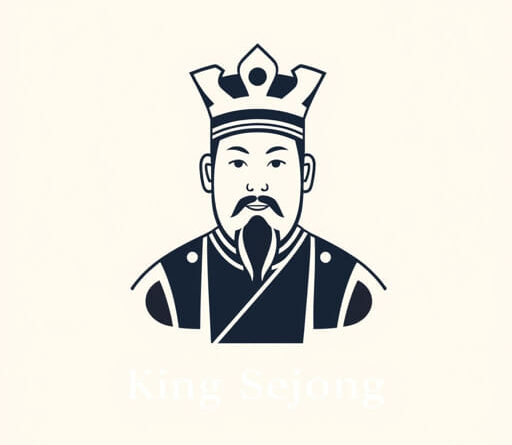facts about king sejong
King Sejong the Great is one of the most revered figures in Korean history, celebrated for his profound contributions to culture, science, and governance. Reigning from 1418 to 1450 during the Joseon Dynasty, Sejong’s leadership transformed Korea in ways that still resonate today. His dedication to improving the lives of his people, promoting knowledge, and fostering innovation established a legacy of wisdom and benevolence. King Sejong is best known for creating Hangul, the Korean alphabet, which dramatically increased literacy and cultural pride among Koreans. Exploring facts about King Sejong reveals a leader whose influence extended far beyond his era, shaping the identity and progress of Korea for centuries.
Early Life and Ascension to the Throne
King Sejong was born on May 15, 1397, as the third son of King Taejong, the third monarch of the Joseon Dynasty. Originally named Yi Do, he was not the first in line for the throne but was chosen due to his intelligence, leadership qualities, and moral character. His father recognized his talents and dedication to public service, which led to Sejong’s ascension in 1418 after Taejong abdicated.
- Born Yi Do in 1397.
- Third son of King Taejong.
- Chosen to succeed his father due to merit and wisdom.
- Became the fourth king of Joseon in 1418.
Creation of Hangul: A Revolutionary Alphabet
Perhaps the most celebrated achievement of King Sejong was the creation of Hangul, the Korean writing system. Before Hangul, Koreans primarily used Classical Chinese characters, which were difficult for common people to learn. King Sejong wanted to develop an easy-to-learn script to promote literacy and allow more people to access education and government affairs.
In 1443, under King Sejong’s guidance, scholars in the Hall of Worthies created Hangul, originally called Hunminjeongeum, meaning the correct sounds for the instruction of the people. This phonetic alphabet consists of 14 consonants and 10 vowels, designed to accurately represent Korean sounds. Hangul empowered ordinary citizens and became a symbol of Korean identity and independence.
- Created Hangul in 1443.
- Designed to be simple and accessible to all social classes.
- Originally named Hunminjeongeum.
- Contributed to widespread literacy and cultural pride.
Scientific and Technological Contributions
King Sejong was also a patron of science and technology, commissioning numerous innovations that advanced agriculture, astronomy, and medicine. He supported the development of rain gauges to measure rainfall, crucial for farmers to plan crops and manage water resources. His reign saw improvements in calendar systems, including the creation of more accurate lunar calendars based on careful astronomical observations.
Medical advancements under King Sejong included the publication of medical texts and the encouragement of research into herbal remedies and treatments. His support for scholars and scientists helped elevate Korea’s intellectual standing and improved the well-being of his people.
- Commissioned rain gauges for agricultural use.
- Improved calendar and astronomical systems.
- Supported medical research and published medical texts.
- Encouraged scientific inquiry and innovation.
Governance and Social Reform
King Sejong’s reign was marked by thoughtful governance aimed at justice and welfare. He worked to reduce the burdens of common people by reforming tax systems and implementing laws that protected peasants from exploitation. He promoted Confucian ideals of benevolent leadership and morality, which shaped the Joseon Dynasty’s administrative philosophy for generations.
Sejong emphasized meritocracy in government, selecting officials based on ability rather than birthright. This approach enhanced the efficiency and fairness of the state, setting standards for future Korean rulers. His policies fostered stability, economic growth, and social harmony throughout his kingdom.
- Reformed taxation to ease peasants’ burdens.
- Implemented laws to protect common people.
- Promoted merit-based selection of government officials.
- Upheld Confucian principles of justice and morality.
Cultural and Artistic Achievements
King Sejong also supported the arts, encouraging literature, music, and painting. The royal court became a center of cultural flourishing, producing works that celebrated Korean heritage and Confucian values. He commissioned compilations of historical texts and sponsored poets and scholars, enriching the intellectual landscape of Joseon Korea.
His reign saw the development of traditional Korean music and instruments, which remain integral to Korea’s cultural identity today. King Sejong’s patronage of culture helped unify the nation and preserve its traditions for future generations.
- Supported literature, poetry, and historical scholarship.
- Encouraged the development of traditional Korean music.
- Preserved and promoted Korean cultural heritage.
- Created a vibrant intellectual and artistic environment.
Legacy and Honors
King Sejong’s legacy is profound and enduring. He is remembered as a wise and compassionate ruler who prioritized the well-being of his people above all else. In modern Korea, Sejong is celebrated with monuments, museums, and even a city named after him Sejong City which serves as an administrative capital.
The creation of Hangul alone has earned King Sejong a place among the world’s great cultural innovators. His contributions to science, governance, and culture are taught in Korean schools, and his birthday is observed as a national holiday called Hangul Day, commemorating the invention of the Korean alphabet.
- Remembered as one of Korea’s greatest kings.
- Sejong City named in his honor.
- Hangul Day celebrates his creation of the Korean alphabet.
- Influences Korean culture, language, and governance to this day.
Summary of King Sejong’s Key Contributions
- Created Hangul, revolutionizing Korean literacy.
- Advanced science and technology, especially in agriculture and astronomy.
- Reformed government policies to promote justice and welfare.
- Supported cultural and artistic growth in the Joseon Dynasty.
King Sejong the Great stands as a towering figure in Korean history, whose visionary leadership transformed the nation’s language, science, and society. His commitment to education, innovation, and justice laid the foundations for a prosperous and culturally rich Korea. The facts about King Sejong illustrate not only his achievements but also the values of wisdom, compassion, and progress that define his legacy. His life and work continue to inspire Koreans and people worldwide, highlighting the power of enlightened leadership to shape a nation’s destiny.
